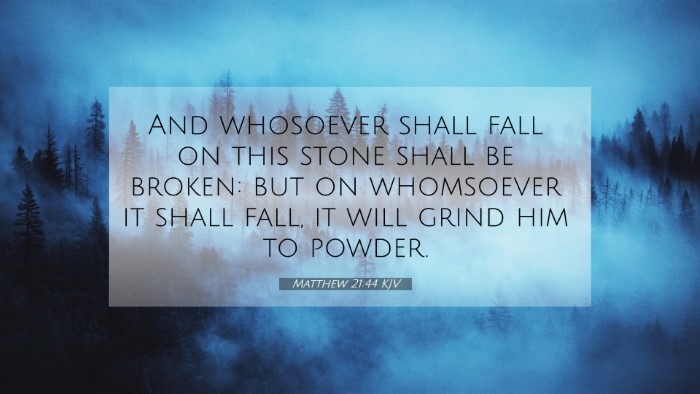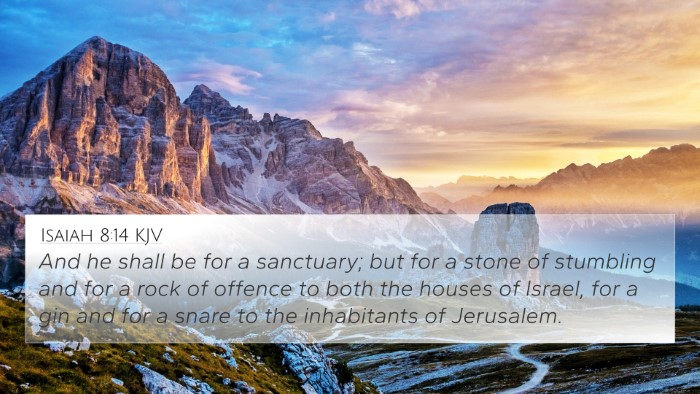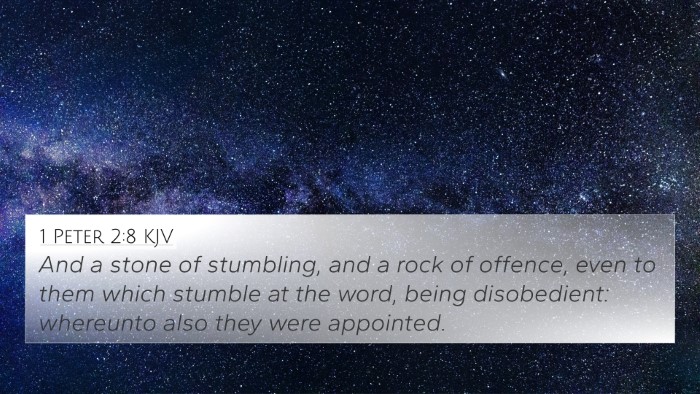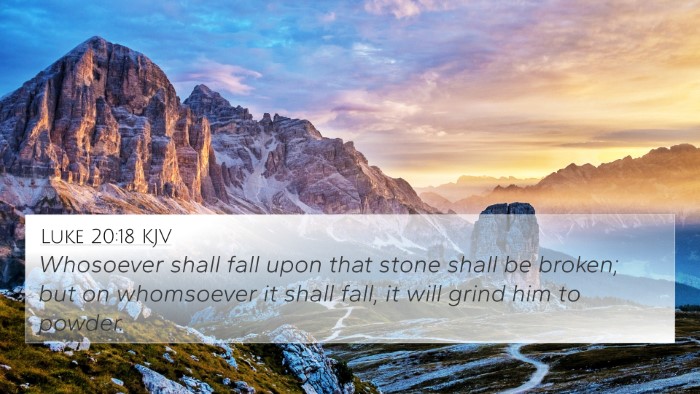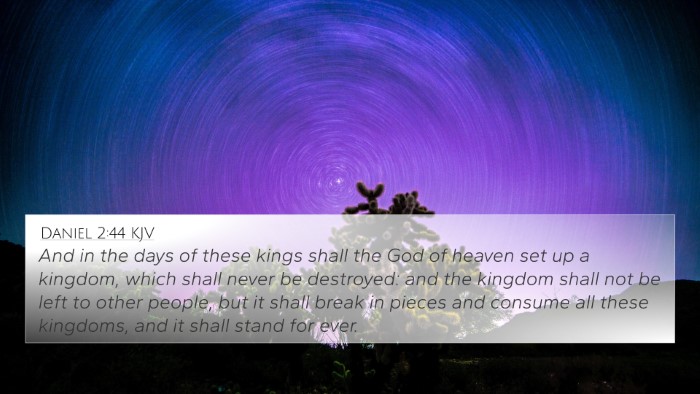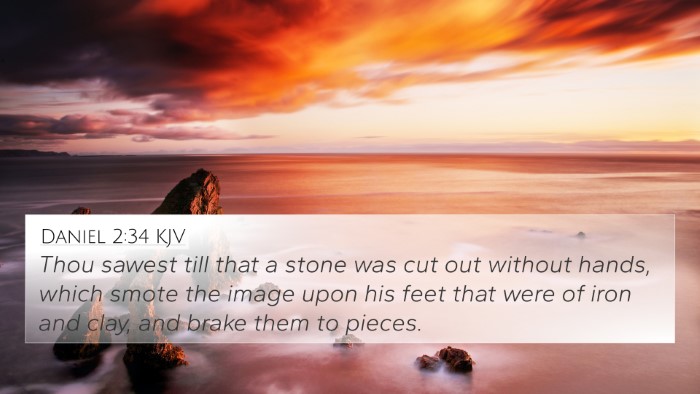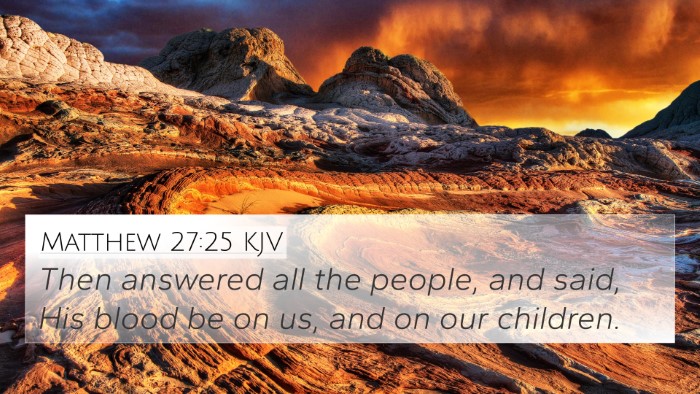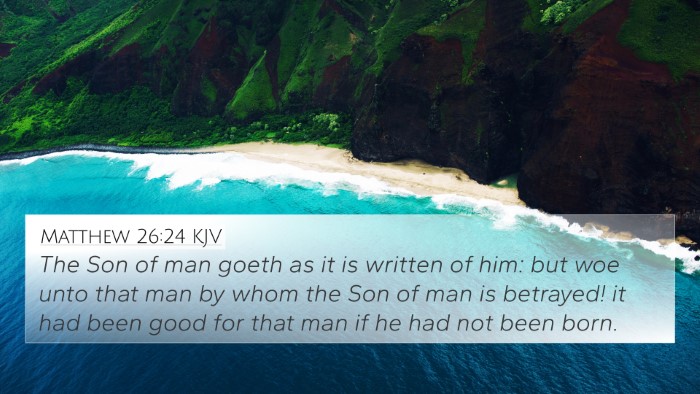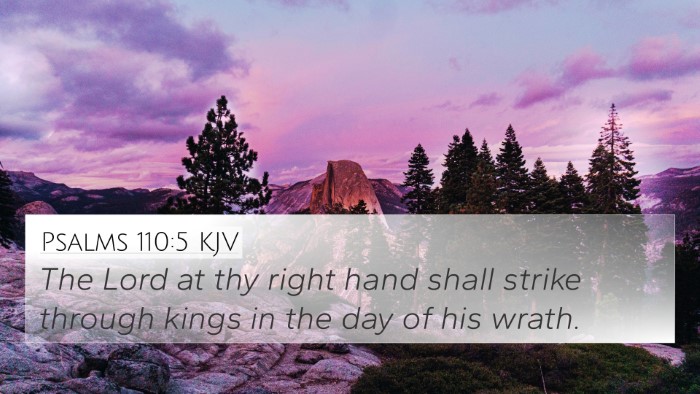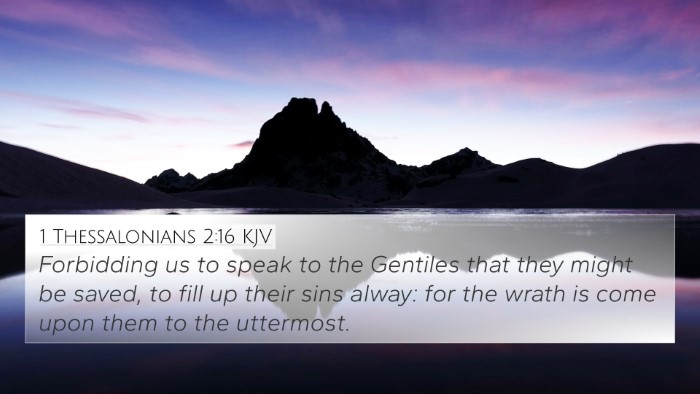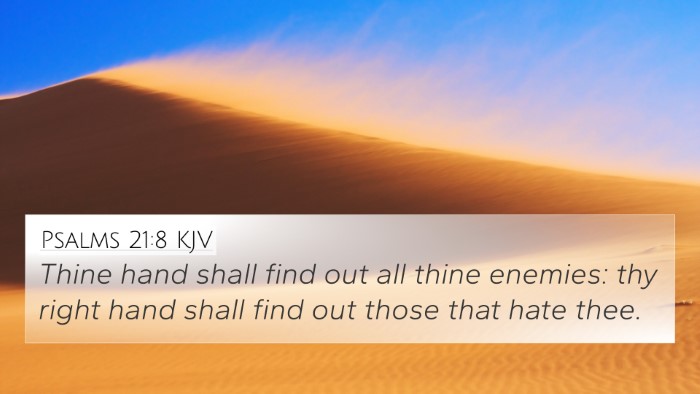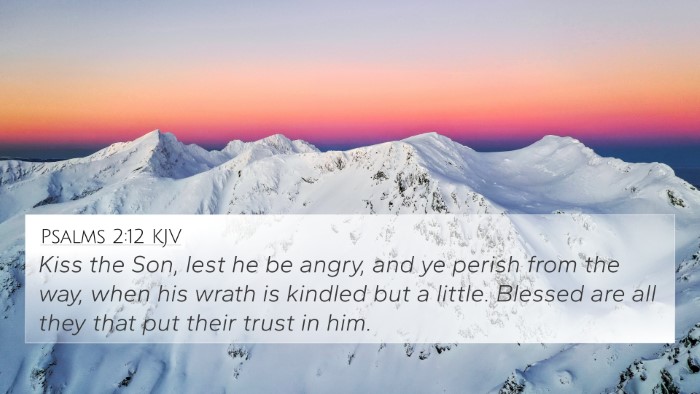Understanding Matthew 21:44
Verse: "And whoever falls on this stone will be broken; but on whomever it falls, it will grind him to powder." (Matthew 21:44)
Summary of Meaning
Matthew 21:44 encapsulates profound truths about judgment and redemption, symbolized through the metaphor of a stone. This stone represents Christ, the cornerstone of faith, signifying that all must reckon with Him. To fall upon this stone indicates a humbled acceptance of Christ, leading to spiritual brokenness and transformation. Conversely, for the stone to fall upon a person signifies imminent judgment.
Commentary Insights
Matthew Henry's Commentary
Matthew Henry interprets this verse as a stark warning about resisting Christ. Falling on the stone signifies a submissive approach, whereas the stone falling on an individual emphasizes the consequences of rejecting Christ. His analysis highlights the dual nature of Christ's impact—bringing salvation to the humble but destruction to the proud.
Albert Barnes' Notes
Barnes amplifies this notion by emphasizing the prophetic nature of this verse, drawing parallels to the prophecies in the Old Testament. He points out that the stone is a reference to Jesus himself, and warns that those who oppose him will face dire consequences, indicating that every person must make a choice regarding their relationship with Christ.
Adam Clarke's Commentary
Clarke expounds on the metaphor of the stone, suggesting it is representative of both Christ and the gospel itself. He notes that falling upon the stone symbolizes repentance, where individuals are made aware of their sins and recognize their need for forgiveness. The act of being ground to powder illustrates the finality and severity of divine judgment on those who reject God's mercy.
Bible Cross-References
- Isaiah 8:14: "He will be as a sanctuary, but a stone of stumbling and a rock of offense to both the houses of Israel..."
- Luke 20:18: "Whoever falls on that stone will be broken; but on whomever it falls, it will grind him to powder."
- 1 Peter 2:8: "And a stone of stumbling and a rock of offense. They stumble, being disobedient to the word..."
- Psalm 118:22: "The stone which the builders rejected has become the chief cornerstone."
- Romans 9:33: "As it is written: 'Behold, I lay in Zion a stumbling stone and rock of offense...'
- Daniel 2:34-35: "You watched while a stone was cut out without hands... and became a great mountain and filled the whole earth."
- Acts 4:11: "This is the stone which was rejected by you builders, which has become the chief cornerstone."
Connections to Other Bible Verses
Matthew 21:44 serves as a pivotal verse bridging both Old and New Testament teachings. The metaphorical implications of the stone resonate throughout scripture, fostering a deeper understanding through thematic connections.
- Foreshadowing Judgment: The concept of falling upon the stone parallels themes of judgment found in Revelation 20:11-15 where the dead stand before God for judgment.
- Transformation through Brokenness: The idea of being broken yields a cross-reference with 2 Corinthians 5:17, where if anyone is in Christ, they become a new creation.
- Rejection of Christ: The rejection theme aligns with John 1:11, "He came to His own, and His own did not receive Him."
Thematic Analysis
The rich themes in Matthew 21:44 call for analytical and comparative studies of related scriptures. Tools for Bible cross-referencing, such as concordances and reference guides, assist in illuminating these connections.
Cross-Referencing Methods
Utilizing a systematic approach for Bible cross-reference studies can enhance one's understanding of the inter-Biblical dialogue. This verse invites profound contemplation, encouraging believers to reflect upon their stance towards Christ, ensuring their lives are in alignment with His teachings. Key methods include:
- Identifying Key Themes: Recognize the central motifs in a verse to discover related texts.
- Verse Mapping: Track the contextual and thematic journey of pivotal verses across scripture.
- Group Studies: Engage with others in comparative analysis, focusing on how different scriptures illuminate similar themes.
Conclusion
Matthew 21:44 stands as a significant verse within the biblical narrative, offering profound insights about Christ's dual role as savior and judge. It underscores the necessity of recognizing the authority of Christ, either leading to the fulfillment of a humble faith or the consequence of rejection. By engaging with cross-referenced scriptures, believers can foster a deeper connection with the themes of redemption and judgment that reverberate throughout God’s word.


